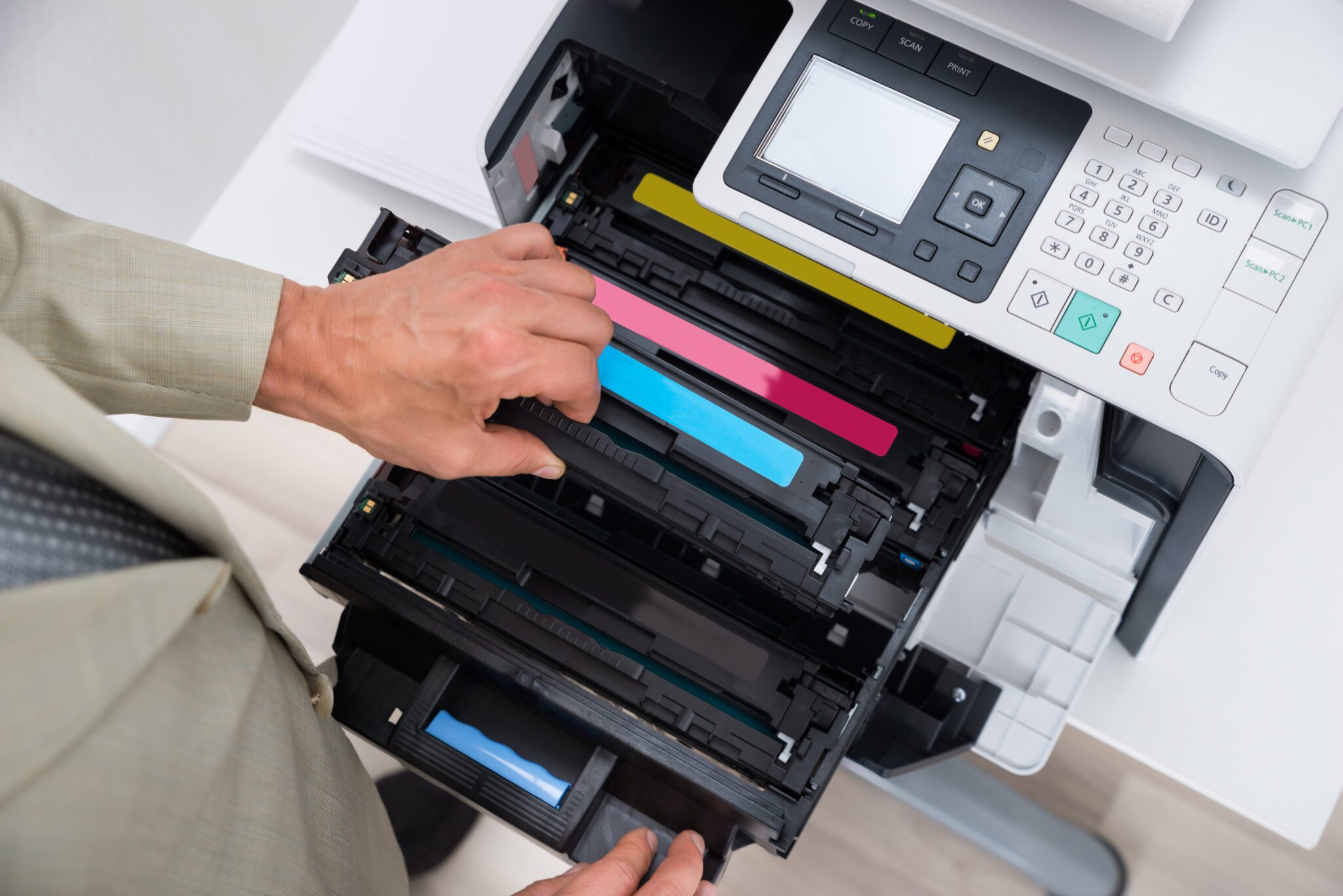
Printer Maintenance Tips: Keep Your Printer Running Smoothly
Printers are essential for both work and personal use, but like any piece of equipment, they require regular maintenance to ensure long-lasting, trouble-free performance. Below, we’ll cover key tips to keep your printer in great condition and extend its life.
Regular Printer Cleaning
One of the most important aspects of printer maintenance is keeping the machine clean. Dust, ink residue, and paper fibers can cause a range of issues, from poor print quality to frequent paper jams.
Cleaning the Print Heads
Over time, ink can build up on the print heads, leading to clogs or poor-quality prints. Regular cleaning can help keep them in good condition.
- How to clean: Most printers have an automatic print head cleaning feature in their settings.
- Frequency: Clean the print heads once a month, or more often if you notice issues like streaks or faded prints.
Exterior Cleaning
A clean exterior prevents dust and debris from entering the machine and affecting performance.
- How to clean: Use a soft cloth to gently wipe down the printer. Avoid using abrasive materials that could scratch the surface.
- Frequency: Clean the printer exterior weekly, especially if it’s in a dusty area.
Paper Tray and Rollers Maintenance
The paper tray and rollers play a crucial role in feeding paper through your printer. Dirt or debris in these areas can lead to frequent paper jams or misfeeds.
Cleaning the Rollers
Over time, paper dust and ink can accumulate on the rollers, causing slippage or jams.
- How to clean: Use a lint-free cloth lightly dampened with water to wipe the rollers. Avoid using harsh chemicals.
- Frequency: Clean rollers every 2-3 months or whenever you notice feeding issues.
Checking the Paper Tray
Ensure that the paper tray is free from debris and that the paper is stacked properly.
- How to clean: Remove any remaining paper and gently clean the tray with a soft cloth.
- Frequency: Check and clean the paper tray weekly or whenever you experience paper feed problems.
Monitor Ink or Toner Levels
Low ink or toner levels can affect the quality of your prints. Monitoring these levels helps avoid surprises and allows you to replace cartridges before they run out completely.
How to Check Ink or Toner Levels
- Inkjet Printers: Most inkjet printers provide an easy way to check ink levels through the printer’s control panel or your computer’s printer settings.
- Laser Printers: Laser printers may have a toner indicator light or a menu option that displays the toner level.
Replace Ink or Toner Before It Runs Out
- How to replace: Purchase a replacement ink or toner cartridge and follow your printer’s instructions to replace the old one.
- Frequency: Replace ink or toner when levels are low, typically before reaching 20% of remaining ink or toner.
Keep Software and Drivers Up to Date
Outdated drivers or software can cause connectivity issues, poor print quality, or incompatibility with your devices.
How to Update Printer Software
- How to update: Check your printer manufacturer’s website for the latest drivers and software updates. You can usually download them directly from their support page.
- Frequency: Check for updates every 6 months, or whenever you notice performance issues.
Avoid Overuse
While printers are built to handle regular use, overworking them can lead to overheating or premature wear.
Tips for Preventing Overuse
- Don’t overload the printer: Follow the manufacturer’s guidelines for paper capacity to avoid straining the machine.
- Give it a break: If you’re printing large volumes, give your printer time to cool down between jobs to avoid overheating.
Troubleshooting Common Issues
Even with regular maintenance, printers can encounter issues. Here are a few common problems and how to troubleshoot them:
Paper Jams
Paper jams are one of the most frequent printer problems.
- How to fix: Turn off the printer and carefully remove the jammed paper. Check for any small pieces of paper or debris in the paper feed path.
- Tip: Always use the correct paper type and size recommended by the manufacturer.
Poor Print Quality
If your prints are blurry, streaked, or faded, it may be due to dirty print heads or low ink levels.
- How to fix: Clean the print heads or replace ink cartridges if necessary. You may also want to check your printer settings to ensure they are correct for the type of document you’re printing.
Conclusion
Proper printer maintenance is key to ensuring your device continues to work efficiently and produces high-quality prints. Regular cleaning, monitoring ink levels, and avoiding overuse are just a few of the simple steps you can take to keep your printer in great condition. Following these tips will help you avoid costly repairs and ensure your printer lasts longer.
If you’re facing any issues or need assistance, get in touch for more information!
